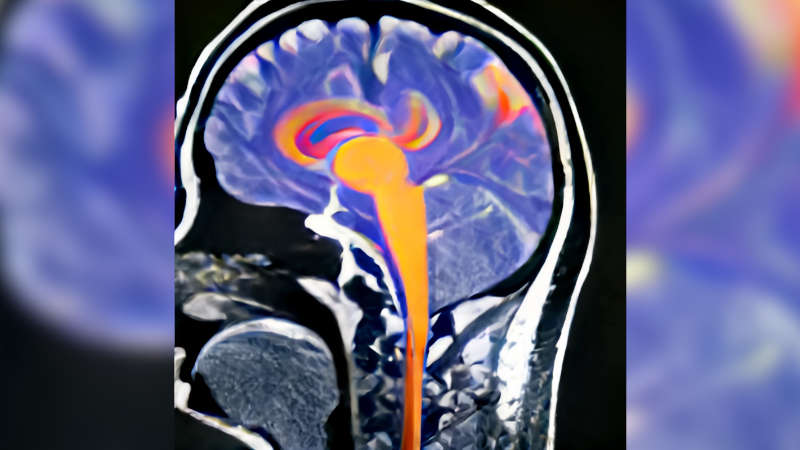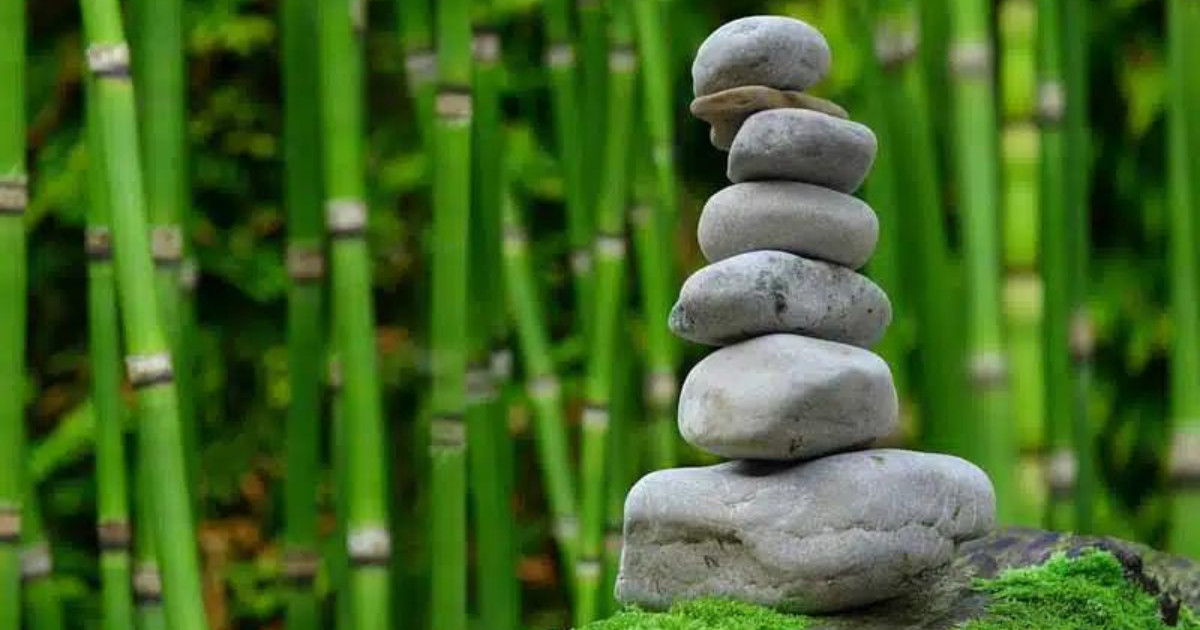Meditation and hypnosis can provide a means for you to balance the chaotic energy in your life. For centuries people have turned to meditation as a way to calm and still the mind.
In more recent times hypnosis has played more of a part in finding a similar kind of peace for many people. As this duo grows as a popular combination, you may find the following content brings value to you.
Table of Contents
Are Hypnosis and Meditation Different?
What are the main differences between hypnosis and meditation? Meditation and hypnosis are both practices that involve inducing a state of altered consciousness or focus. However, they do have key aspects that make them different.
Meditation is a mental exercise that involves focusing attention on a specific object, thought, or activity to train attention and awareness, and achieve a clear and calm state of mind. It is often used as a stress-reduction technique and can take many forms, including mindfulness meditation, mantra repetition, and visualization.
Meditation is typically done voluntarily and can be practiced by anyone, regardless of their level of awareness or suggestibility.
Hypnosis, on the other hand, is a trance-like state in which a person becomes highly suggestible and responsive to the suggestions of a Hypnotist or Hypnotherapist.
Hypnosis is often used as a therapeutic tool to help people overcome problems such as phobias, addiction, or chronic pain. In hypnosis, the Hypnotist uses techniques such as relaxation and suggestion to help the person enter into a state of focused attention and heightened suggestibility.
Hypnosis is usually induced by a Hypnotist, and the person being hypnotized may or may not be aware of what is happening.
Basically, meditation is a self-directed mental exercise that involves focusing attention to achieve a clear and calm state of mind, while hypnosis is a state of altered consciousness in which a person becomes highly suggestible and responsive to the suggestions of a Hypnotist or Hypnotherapist.
What about the Guided Meditation?
Guided meditation is a form of meditation in which a trained guide leads the person through a meditation practice, usually by providing verbal instructions or prompts. The guide may use techniques such as visualization, mantra repetition, or mindfulness to help the person focus their attention and achieve a state of relaxation and clarity.
Guided meditation is typically voluntary and is intended to help the person achieve a clear and calm state of mind, improve their ability to focus, and reduce stress.
Is Mindfulness the same as Hypnosis?
No, mindfulness and hypnosis are not the same.
Mindfulness is a mental state achieved by focusing one’s awareness on the present moment, while letting go of judgment and distracting thoughts. It is a form of meditation that involves paying attention to one’s thoughts and feelings in the present moment, without trying to change or suppress them.
Mindfulness can be practiced through a variety of techniques, such as mindfulness meditation, yoga, or mindful breathing. It is typically used as a way to reduce stress, increase awareness and focus, and improve overall well-being.
Can Hypnosis Help with Meditation?
In some cases, hypnosis may be used to help a person enter into a state of relaxation and focused attention that is conducive to meditation.
However, hypnosis is not necessary for being capable of practicing meditation, and meditation can be practiced without hypnosis.
It is important to work with a trained and qualified hypnotherapist or meditation teacher to ensure the safety and effectiveness of these practices.
What are the Three Stages of Hypnosis?
The three stages of hypnosis, also known as the “hypnotic induction,” are:
- Pre-induction: This is the preparatory stage, during which the Hypnotist establishes rapport with the person being hypnotized and sets the stage for the hypnosis session. The Hypnotist may ask the person about their goals for the session and explain the process of hypnosis.
- Induction: This is the stage in which the Hypnotist begins to induce the state of hypnosis. The Hypnotist may use techniques such as relaxation, visualization, and suggestion to help the person enter into a state of focused attention and heightened suggestibility.
- Deepening: This is the stage in which the Hypnotist helps the person enter a deeper state of hypnosis, often by using techniques such as deepening relaxation or deepening suggestion. In this stage, the person may become more receptive to the suggestions of the Hypnotist and may be able to access their unconscious mind more easily.
It is important to note that these stages may not be experienced linearly or predictably, and the depth of hypnosis can vary from person to person.
Hypnosis is a subjective experience. What one person experiences in hypnosis may be different from what another person experiences.
Studies into how the brain functions while in a hypnotic state reveal some very interesting findings. 1
Taking a Break with Hypnosis and Meditation
Have you ever noticed that when you’re ‘taking a break’, sometimes you are not taking a break?
It is not surprising to see studies pointing out that stress levels and anxiety are on the rise. And the occurrences of mental illnesses, such as, depression are escalating too. But what does this have to do with meditation and hypnosis?
With all the demands and expectations of life. It is becoming more important for us to take some much-needed time out to recharge our batteries.
One solution is to work towards alkalizing your thoughts, emotions and energy.
How?
By disconnecting from the noise around you and refreshing with meditation and hypnosis.
A personal favourite Hypnotherapist, who is my ‘go-to guy’, is Steve G. Jones. Steve has an impressive resume and a client base that looks like a roll call for the celebrity A-list.
He is an experienced and qualified Clinical Hypnotherapist who has been practicing since the 1980’s. I have had some amazing results with his audio hypnotherapy sessions.
Recharging Your Batteries
How can you recharge your batteries in such chaotic times?
To combat the chaos in life, I prioritise my downtime and regularly disconnect and refresh with meditation and hypnosis. I have been meditating and using hypnosis for several years now.
In the past, I struggled with adrenal fatigue, migraines, anxiety, and depression. The thought of having to take medication did not interest me. I searched high and low for natural alternatives. One day somebody suggested that I should try a combination of meditation and hypnosis.
But it’s not just me that I’ve seen results with. For many years, my mother had struggled with fatigue, which seemed to mainly be caused by poor sleep. She tended to have very shallow sleep patterns.
Sometimes she would wake up in the middle of the night and stare at the ceiling for hours. Usually falling asleep just before she needed to get up to start her day.
I suggested that she try meditation and hypnosis. Which she did and to her surprise it worked. She said that she felt much more rested and now sleeps better.

We are well aware that it is common for young families and older women to suffer from sleeplessness. However, it is becoming more and more common for many people who:
- frequently use technology,
- have high-stress occupations, and
- are bothered by health or financial concerns.
Suffering from sleeplessness can result in multiple other health complications, and can be debilitating. Unfortunately, these circumstances are experienced by a very large number of the population.
Shut Off the Blue Light
Studies have shown that the continuous illumination from lights and the use of blue light-emitting screens, especially in the late evening, can impact your circadian rhythms. 2
The blue light blocks the melatonin production which helps the body prepare for sleep. It is suggested that we disconnect from our technology and turn the lights to dim, if possible, at least 30 minutes to an hour before retiring to bed.
Researchers have concluded that we should avoid having devices such as mobile phones, tablets, computers, and televisions in our bedrooms. The blue light emitted from these screens throws our body clock out of whack. 3
The blue light from these screens is a similar frequency to sunlight, which sends a message that your brain effectively interprets as ‘wake up – it is still daytime’.
Turn Off and Reboot Yourself
When you disconnect and refresh with meditation and hypnosis you essentially give your body and mind permission to recover.
We turn off and reboot our computers and smart devices regularly to allow them to operate more effectively. But how often do we turn off and reboot ourselves?
Recently I read a study which highlighted that children under 5 years old are spending around 14 hours per week (an average of 2 hours per day) in front of the television and on mobile devices. 4
Data shows that teens are spending up to 44 hours per week on mobile devices. Add to the sleep disruption from blue light emitted by screens, over-exposure to technology is causing many harmful side effects including diminishing social skills and emotional management in youth. 5
Technology can be a wonderful tool, but we need to put some limitations in place. Other studies suggest that our habits with technology are contributing to:
9 Meditation and Hypnosis Health Benefits
There are over 1,400 studies that communicate the benefits of when we disconnect and refresh with meditation and hypnosis.
Neurologists have studied the brain patterns of people who disconnect and refresh with meditation and hypnosis regularly and found some health benefits including.

Improvements You Could See
- mood, emotions, self-image, and mindset 10
- the immune system performance 11
- strategic thinking and creativity 12
- neuroplasticity 13
- circadian rhythms (sleep-wake cycle) 14
Potential Reductions of Health Conditions
These are just some of the reasons why we believe that you should disconnect and refresh with meditation and hypnosis.
Working with your body on an energetic level, as well as a nutritional level, will bring you results that are amazing. Making sure that your thoughts are alkaline and your food is whole and full of powerful nutrients is the best advantage you could give yourself.
On the topic of wholefoods, did you know that Sea Moss is popularly believed to have 92 of the 102 minerals found in the human body? And that it is a source of plant based, Vegan friendly collagen stimulating properties?
For those who are looking to boost their Fulvic Acid, Humic Acid, and Selenium levels we have found that Shilajit is a great support.
And you thought all you were going to learn about here was meditation and hypnosis.
References
- “Brain Activity and Functional Connectivity Associated with Hypnosis ” – H. Jiang, M. P. White, M. D. Greicius, L. C. Waelde, D. Spiegel, 27 July 2016 [Oxford Academic] [Archive] ↩︎
- “What is blue light? The effect blue light has on your sleep and more” – Harvard Medical School, 7 July 2020 [Harvard Health Publishing] [Archive] ↩︎
- “Technology in the Bedroom” – E. Suni, A. Singh, 4 November 2020 [Sleep Foundation] [Archive] ↩︎
- “Give the Screen a Rest” – South Australian Government, Last Accessed 22 June 2017 [SA Health] [Archive] ↩︎
- “Young children owning smartphones is the new normal” – RCH, May 2017 [Royal Children’s Hospital] [Archive] ↩︎
- “Associations of Leisure-Time Internet and Computer Use With Overweight and Obesity, Physical Activity and Sedentary Behaviors: Cross-Sectional Study” – C. Vandelanotte, T. Sugiyama, P. Gardiner, N. Owen, 27 July 2009 [PubMed] [Archive] ↩︎
- “The Evolution of Technology and Physical Inactivity: The Good, the Bad, and the Way Forward” – M. N. Woessner, A. Tacey, A. Levinger-Limor, A. G. Parker, P. Levinger, I. Levinger, 28 May 2011 [Frontiers in Public Health] [Archive] ↩︎
- “Sedentary Lifestyle: Overview of Updated Evidence of Potential Health Risks” – J. H. Park, J. H. Moon, H. J. Kim, M. H. Kong, Y. H. Oh, 19 November 2020 [PubMed] [Archive] ↩︎
- “Sitting Disease: How a Sedentary Lifestyle Affects Heart Health” – E. D. Michos, 8 August 2021 [Johns Hopkins Medicine] [Archive] ↩︎
- “States of Consciousness and Transpersonal Psychology” – R. Metzner, 1989 [SpingerLink] [Archive] ↩︎
- “Mindfulness meditation and the immune system: a systematic review of randomized controlled trials” – D. S. Black, G. M. Slavich, 1 June 2017 [PubMed] [Archive] ↩︎
- “Can 10 Minutes of Meditation Make You More Creative?” – E. Schootstra, D. Deichmann, E. Dolgova, 29 August 2017 [Harvard Business Review] [Archive] ↩︎
- “Brain Awareness Week: Neuroplasticity” – M. Costandi, 15 March 2017 [MIT Press] [Archive] ↩︎
- “Meditation and Its Regulatory Role on Sleep” – R. P. Nagendra, N. Maruthai, B. M. Kutty, 26 March 2012 [PubMed] [Archive] ↩︎
- “Meditation and a relaxation technique to lower blood pressure” – Harvard Medical School, 14 June 2020 [Harvard Health Publishing] [Archive] ↩︎
- “Effect of Meditation on Cognitive Functions in Context of Aging and Neurodegenerative Diseases” – R. Marciniak, K. Sheardova, P. Čermáková, D. Hudeček, R. Šumec, J. Hort, 27 January 2014 [PubMed] [Archive] ↩︎
- “Hypnosis, Meditation, and Relaxation for Pain” – M. A. Dunkin, 17 November 2022 [WebMD] [Archive] ↩︎
- “Cognitive Hypnotherapy for Accessing and Healing Emotional Injuries for Anxiety Disorders” – A. Alladin, 19 May 2016 [Taylor & Francis] ↩︎
Last Updated on 5 months by D&C Editorial Team




